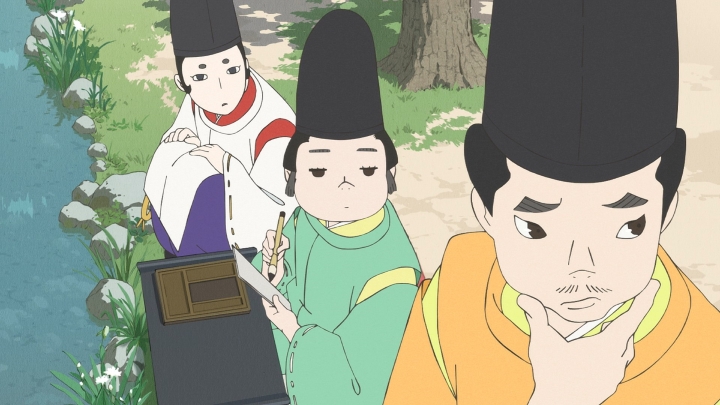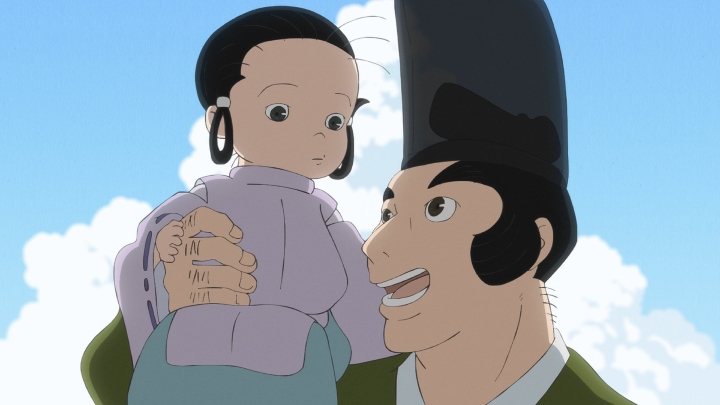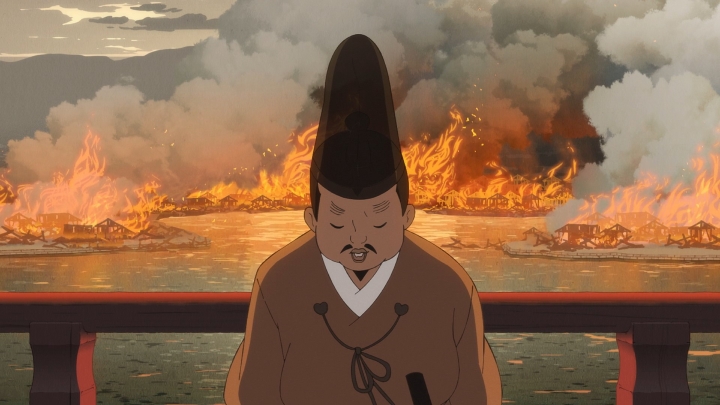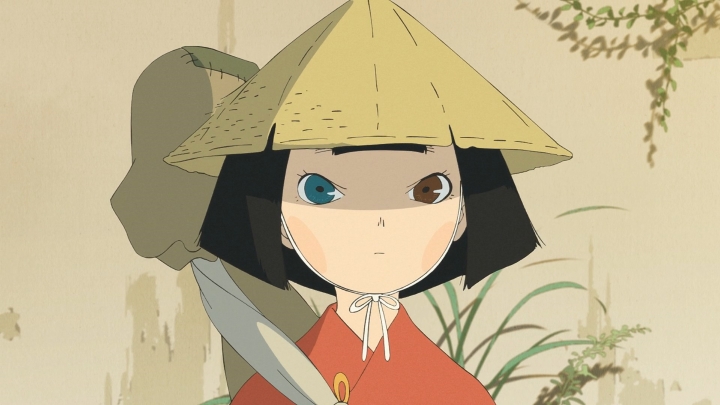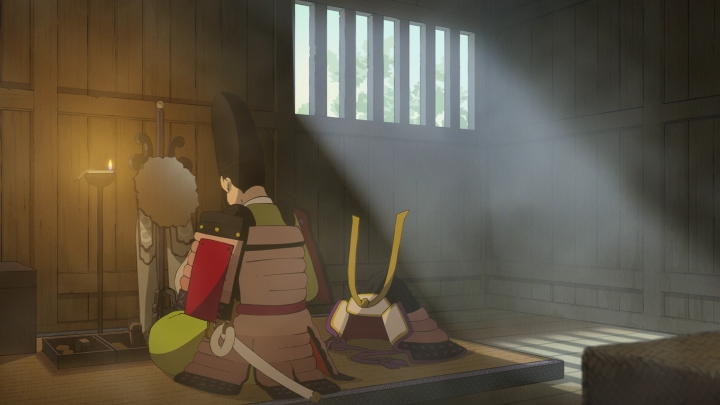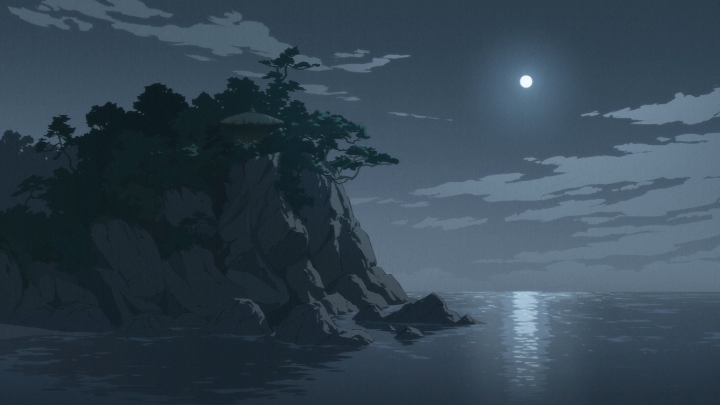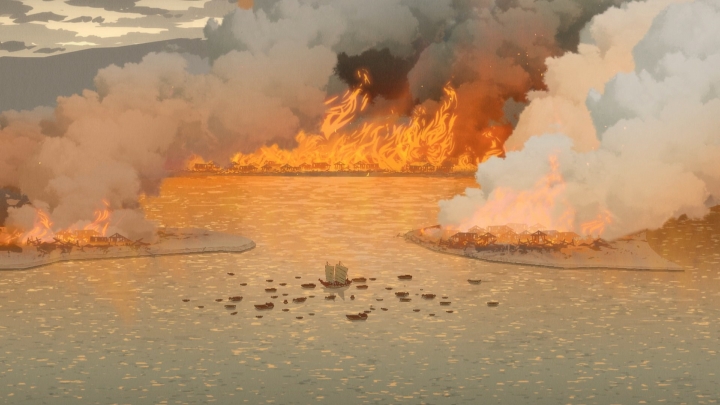Biwa’s role in Heike Monogatari is a strange thing. Despite having been introduced as our main character, she’s operated mostly as an observer since the third episode, and with her recent banishment from the Taira clan, she’s less connected to the main story than ever. It seems clear that screenwriter Yoshida intends her to be the Tale of the Heike’s author, hence all the parallels to the white-haired lute priest, who has recited snippets of the poem as though it were already written. Divorced from the action as Biwa is, she’ll need to rely on her supernatural eyesight to compile the tale, which explains its inclusion as a character trait. Yoshida has all her bases covered, then, but it still feels odd for our one-time lead character to be such a tagalong. Biwa bookended this week’s episode in the first and last scenes, but apart from those appearances, she showed up just twice. I’d be quicker to criticize the show for this issue if its plot didn’t span 15 years of Japanese history (wherein most potential protagonists died partway through).
She may not be fighting battles or advising generals with the aid of her magical eyeballs, but Biwa did resume her previously discontinued search for her mother this week. Her visit to the monastery where Gio and Hotoke-Gozen once worshipped was a nice reminder of their story (still one of the series’ high points in my view), and it kicked off a trek that took her all the way to the mountainous Echigo Province before sending her back to the capital. All she got for her weeks of circuitous travel was the name of the former shirabyoshi whose eyes she shares: Lady Asagi, who may or may not be her birth mother. The show continues to withhold details on the subject, which makes me wonder what additional significance Asagi’s character will gain when she and Biwa finally meet. I’m expecting their reunion to be a traditionally emotional one, but perhaps she’s connected to the white-haired lute priest in some way, and the series is saving the reveal for its final episodes. Or maybe Asagi has already passed on, and the cat that’s been accompanying Biwa recently is her new incarnation – it does have blue eyes, just like Asagi is rumored to have had.
Biwa’s return to Kyoto coincided with Yoshinaka’s arrival there, which marked the end of the Heike’s political dominance once and for all. Kiyomori’s death in last week’s episode effectively foreshadowed their decline, but their decision to flee the capital before the Genji could seize it made it totally obvious: the Heike are doomed. It’s fitting that their defeat would be delivered by Yoshinaka (briefly mentioned in the previous episode but truly introduced in this one), since his youthful charisma and motley crew of followers are a far cry from the Taira military’s excessive ceremoniousness. Earlier in the episode, Yoshinaka’s treetop acrobatics and courteous self-introduction made quite an impression on Koremori’s advisors, though his refusal to ambush his enemies didn’t stop him from using the cover of night to strike fear into the Heike army. The depiction of this conflict (the Battle of Kurikara) was hampered by limited animation, and though large-scale warfare is nearly impossible to portray on a TV schedule, if there was any battle that should have been rendered in more detail, it was this one. According to the lute priest’s accompaniment, 70,000 Taira troops were driven off a cliff at Kurikara, which would have shifted the tide of the war overnight.
The battle played out differently in real life, of course, but it was the historical turning point in the Genpei War, as well as a brutal setback for Koremori. We learned this week that he had finally achieved a significant victory in the months leading up to this battle, but the way he fled at Kurikara, wide-eyed and convinced he’d just escaped from hell, seemed like a narrative end to his military ambitions. It strongly echoed his helplessness at the Battle of Uji Bridge in episode 5, making the case that his recent efforts as a warrior were ultimately in vain. That’s a crushing verdict to deliver in a setting where family honor is paramount, but personally, I was far more affected by Munemori’s strategy for fleeing Kyoto. As the new head of the Taira clan, his decision was to burn as many Heike estates as possible, leaving the incoming Genji forces with fewer resources upon their takeover of the capital. Even Kiyomori’s palace at Fukushima was set ablaze, which the anime illustrated in great style. Munemori didn’t merely abandon everything that his father had accomplished; he razed it to the ground in the name of self-preservation. That widespread devastation serves as a fitting end for the deceased Kiyomori – a man whose lack of foresight resulted in a swiftly-destroyed legacy.

